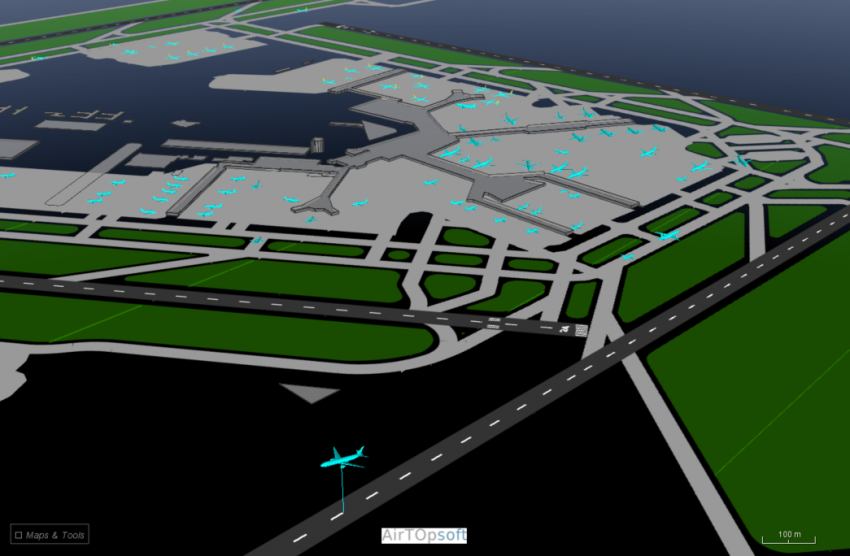In a complex environment like an airport or airspace, changes are notoriously difficult to implement, always time-consuming and usually require serious investment. By using Fast Time Simulation first, the solutions envisioned can be simulated, studied and analysed before any infrastructure investment is made. Results are available quickly, within a matter of weeks rather than years.
[blockquote text=”The effects of each potential change within the airport or airspace operations can be quickly and easily visualised” text_color=”#004361″ show_quote_icon=”yes”][vc_separator type=’transparent’ position=’center’ color=” thickness=’5′ up=” down=”]
Capacity enhancement
Airports and airspaces face growing capacity constraints as air traffic levels increase around the world. The growing demand also exacerbates any inefficiencies that might already exist in the current systems.
Fast Time Simulation (FTS) can help an organisation optimise operations and find ways to bridge the gap between the current situation and a system that can easily handle the growth forecasts. FTS is a highly useful tool for identifying inefficiencies in the system and for testing potential solutions without having to make actual – expensive – changes to infrastructure first.
Operation Optimisation
Running simulations for demand forecasts or to test possible solutions to an issue is an effective way to significantly reduce the risk of making decisions that might not turn out as advantageous as originally thought. The impact of each potential change can be quickly and easily visualized from the various KPIs that are measurable from the simulation output.
As with any simulation, the quality of results will depend heavily on the quality of inputs to the model. As the saying goes, “rubbish in is rubbish out.” The closer the simulation is to reality, the more reliable the results will be.
Real value added
Because of its usefulness during the feasibility and planning phases of airport and airspace projects, we use FTS quite often at To70. The results are always valuable to the process. During a recent throughput optimisation study for an airport in North America, using FTS allowed us to identify changes in taxi flows that would provide additional airfield capacity. The simulation also helped identify changes in the stand allocation policy that would considerably increase operational efficiency.
Besides efficiency, FTS is also useful for infrastructure planning and maintenance. Validated FTS models such as the one we created for Amsterdam Airport Schiphol can be used to easily test proposed infrastructure changes and determine their effects on capacity and airport operations.
In the case of airspace capacity, we recently used FTS to study the interaction of air traffic between two adjacent airports in India and identify potential safety issues. The simulation analysed traffic interaction for runway usage under several different modes of operations, thus allowing mitigative measures to be implemented that eliminated the safety concerns.
As these examples show, FTS is a versatile tool for optimising air traffic, whether at the airport or in the airspace. It can find inefficiencies, test potential solutions, even check the compliance of designed procedures to safety standards, and all without disrupting actual operations.
About To70. To70 is one of the world’s leading aviation consultancies, founded in the Netherlands with offices in Europe, Australia, Asia, and Latin America. To70 believes that society’s growing demand for transport and mobility can be met in a safe, efficient, environmentally friendly and economically viable manner. To achieve this, policy and business decisions have to be based on objective information. With our diverse team of specialists and generalists to70 provides pragmatic solutions and expert advice, based on high-quality data-driven analyses. For more information, please refer to www.to70.com.

